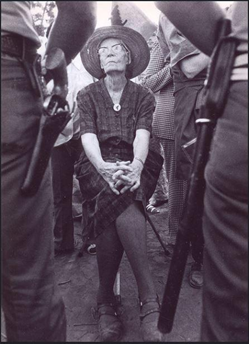Between 1940 and 1955 two American sociologists – first Ruby Jo Reeves Kennedy and then Will Herberg – published seminal works on what has come to be known as the Triple Melting Pot. The phrase “melting pot” is itself uniquely American, and explains the government’s desired outcome of immigration. To get a clear understanding of the ultimate goal of American assimilation one need only investigate the not uncommon Fourth of July ritual of people dressed in traditional ethnic garb climbing into a huge pot and coming out all dressed like Uncle Sam. To those who felt that being an American meant trading one’s family cultural touchstones for a one-size-fits-all blandness this was the ideal situation.
Well, the Triple Melting Pot theory stated that, on the way to becoming red, white, and blue clones, families held on to one aspect of their imported culture: their religion. Americans, post-World War II became Catholics, Protestants, and Jews, and thus the predominance of talk about the Judeo-Christian ethic. Sure we didn’t worship the same way, but at least we could all agree about how we should act. Sharing the Ten Commandments and a belief that we hold to the same values enabled people to live in relative harmony.
Today, I propose, the Triple Melting Pot has given way to the “Great Divide.” In 21st Century America people are more prone to identify themselves in political rather than religious language, and even when they speak in religious terms they almost can’t help politicizing it. When people identify as a liberal Catholic, a conservative Catholic, a progressive Catholic, or whatever other kind of Catholic, they are viewing their faith through a political lens which tints their Catholicism and makes them less able to live by and preach the Gospel of Jesus.
 As a counterbalance to this phenomenon, is the witness of Servant of God Dorothy Day. She lived the Gospel in an apolitical way that disturbed both the left and the right, and kept herself unflinchingly tied to the Church in a time when so many – including priests and vowed religious – were walking away. She lived by the belief that when it came to economic and other justice issues she was as “liberal” as the Church allowed and on religious and personal morality issues she was as “conservative” as the Church demanded.
As a counterbalance to this phenomenon, is the witness of Servant of God Dorothy Day. She lived the Gospel in an apolitical way that disturbed both the left and the right, and kept herself unflinchingly tied to the Church in a time when so many – including priests and vowed religious – were walking away. She lived by the belief that when it came to economic and other justice issues she was as “liberal” as the Church allowed and on religious and personal morality issues she was as “conservative” as the Church demanded.
She proposed this plan not because of a fear of a reprimand from the Church or of going to hell, but because she truly believed – with the kind of belief that maybe only a convert can have – that the Church was the visible yet mystical Body of Christ on earth. She, more than anything else, wanted to be a follower of Jesus.
To the consternation of her old communist and atheist friends, she saw that there were certain lines that cannot be crossed, and not because “the Church says so” but because Jesus Christ, the embodiment of the Logos or Order of the Universe, showed us by His life that His Way is the True Way. Her stand with the Prince of Peace was based not on blind faith but on the realization that violence has never and can never bring justice; it only brings more violence and new injustice.
As we at Saint Ignatius focus this week on those who are on the margins of society, on those who say, do, and believe things that we disagree with or find abhorrent, on those with whom we have so little in common except maybe an anger at the way the “other side” approaches hot topic issues, we are called to forge a different path. We are called to see the chasm between left and right, liberal and conservative, and build that bridge whereby people can approach each other as sisters and brothers. Maybe estranged sisters and brothers, but sisters and brothers nevertheless.
Sadly, as the world gets smaller through technology and social media, it also gets more isolated as people go to and revel in their own echo chambers or blast the other side in the anonymity of cyberspace. As my very insightful daughter Mary Kate has told me on more than one occasion: “If you want to get depressed, read the YouTube comments section.”
Well, since I don’t want to get depressed I will, instead, propose that those of us who proclaim faith in Jesus be the bridge over the Great Divide. That we unite with all people of good will – and that is still the majority of us – to preach and live the Good News, to see others not as the members of some privileged, or despised, or deviant, or bigoted group, but as individual persons with eternal souls loved infinitely by God.
Dorothy Day’s funeral was attended by the rich and poor, the famous and infamous, members of the Church hierarchy and atheist anarchists. She, like her Lord, was a bridge between the sad divisions in our world. She took that step that we all must take – the step from the sidelines where Jesus is admired to the front lines where Jesus is followed into the messiness of human interaction. And she took that step in the way that we all must take it by binding ourselves to Christ, His Church, and His Cross.
A.M.D.G.